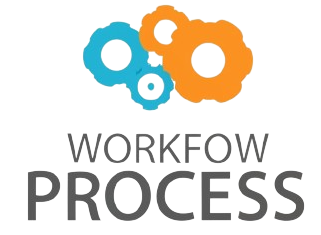Balancing autonomy and control in agentic AI governance is a critical challenge as artificial intelligence systems gain increasing decision-making capabilities. Agentic AI, systems capable of acting independently to achieve specific goals, present unique opportunities and risks. The need to empower AI with enough autonomy to be effective, while maintaining human oversight to prevent unintended consequences, forms the core of contemporary debates in AI governance. This article explores how to strike the right balance between granting AI agents autonomy and imposing necessary controls to ensure ethical behavior, transparency, and accountability. We will examine the foundations of agentic AI, the risks and benefits of autonomy, governance frameworks, and strategies to integrate control mechanisms without stifling AI innovation.
The nature of agentic AI and its implications
Agentic AI refers to systems designed to perform tasks by making autonomous decisions. Unlike narrow AI focused on specific, well-defined problems, agentic AI can adapt and act in dynamic environments, often without constant human intervention. This autonomy enables faster decision-making and scalability in sectors such as finance, healthcare, and autonomous vehicles. However, the increased agency also raises ethical and safety concerns, including error propagation, bias reinforcement, and loss of human control.
Understanding agentic AI involves recognizing the tension between system capability and predictability. As these systems evolve in complexity, their behavior can become less interpretable, which complicates governance. Therefore, assessing the degree of autonomy granted to AI is crucial to managing risks effectively.
Benefits and risks of autonomy in AI systems
Autonomy allows AI systems to:
- Improve efficiency by processing information and executing decisions faster than humans.
- Enhance adaptability to unforeseen events and changing environments.
- Enable innovation in fields where human oversight is limited or impractical.
However, these benefits carry notable risks:
- Loss of accountability if autonomous decisions produce harmful outcomes.
- Potential for manipulation if AI systems exploit loopholes or biases in data.
- Reduced transparency due to opaque decision-making processes known as “black box” effects.
Effective governance requires understanding this balance, ensuring autonomy is granted where it adds value without compromising safety or ethical standards.
Governance frameworks for balancing autonomy and control
Various governance models integrate different levels of human oversight to manage agentic AI:
| Governance model | Description | Role of human oversight | Application examples |
|---|---|---|---|
| Human-in-the-loop | AI systems suggest decisions; humans approve or override them. | High | Medical diagnosis, legal review |
| Human-on-the-loop | AI operates autonomously but humans monitor and intervene as necessary. | Moderate | Autonomous vehicles, financial trading |
| Human-out-of-the-loop | AI makes decisions without human intervention in real-time. | Low | Real-time network security, industrial automation |
Choosing the right model depends on risk tolerance, the criticality of decisions, and legal or ethical implications. Embedding continuous monitoring, audit trails, and feedback loops can help maintain control even in highly autonomous systems.
Strategies for integrating control without stifling innovation
Finding the sweet spot between autonomy and control requires strategies that promote responsible innovation:
- Incremental autonomy: Gradually increase AI decision-making capabilities, allowing learning from real-world outcomes while limiting potential harm.
- Explainability and transparency: Develop AI models that provide interpretable outputs to facilitate human understanding and trust.
- Ethical design frameworks: Incorporate values like fairness, accountability, and privacy from the design phase onward.
- Robust testing and simulation: Stress-test AI behavior in diverse scenarios before deployment to anticipate risks.
- Cross-disciplinary collaboration: Involve ethicists, domain experts, and regulators in developing governance policies.
Such approaches prevent governance measures from becoming overly restrictive, enabling the full potential of agentic AI to be harnessed responsibly.
Conclusion
Balancing autonomy and control in agentic AI governance is essential to unlock the benefits of advanced AI while mitigating its risks. Agentic AI’s growing ability to act independently necessitates governance structures that can adapt to varying levels of decision-making power. The benefits of autonomy—such as efficiency, adaptability, and innovation—must be carefully weighed against risks like loss of accountability, bias, and reduced transparency. Employing governance frameworks like human-in-the-loop or human-on-the-loop ensures proper oversight tailored to the context. Furthermore, strategies including incremental autonomy, explainable AI, and ethical design pave the way for effective control without hindering innovation. Ultimately, successful governance requires a nuanced approach that aligns technological capability with human values and societal goals, ensuring agentic AI serves as a reliable partner rather than an uncontrollable force.
